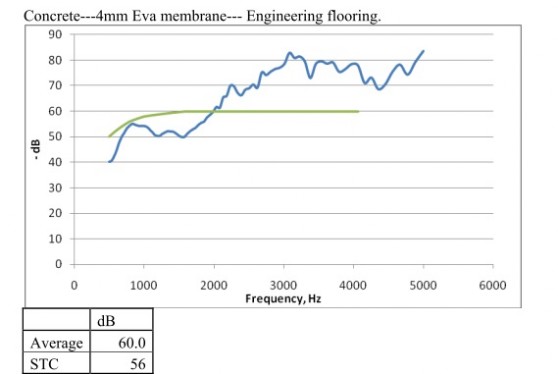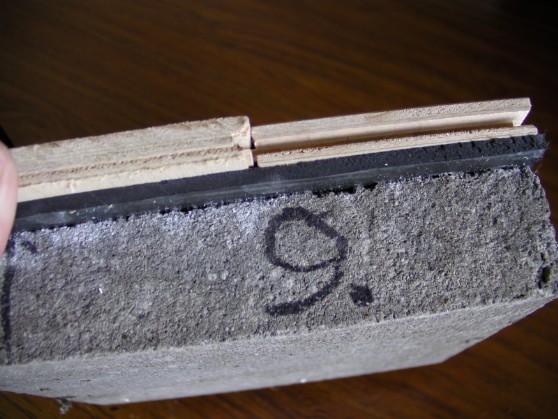Sound Proofing Test - Acoustic Properties of Floor-Celling and Wall Constructions
PO-Laboratories developed a laboratory-scaled method of measurement of airborne sound transmission loss of individual construction materials and composite building partitions such as walls of all kinds, operable partitions, floor‐ceiling assemblies, doors, windows, roofs, panels, and other space‐dividing elements.
Unlike as the full-scale field tests PO-Laboratory provides small-scale tests of measurement of airborne sound transmission loss using only 1 square feet sized samples. This explaines the unusually low prices for acoustic tests at PO-Laboratories.
Sound transmission loss as defined in Terminology ASTM C 634, refers to the response of specimens exposed to a diffuse incident sound field, and this is the test condition approached by this laboratory test method. The test results are therefore most directly relevant to the performance of similar specimens exposed to similar sound fields. They provide, however, a useful general measure of performance for the variety of sound fields to which a partition or element may typically be exposed. In this test method, the intent is that only significant path for sound transmission is through the test specimen. This is not generally the case in buildings where there are often many other paths for sounds—flanking sound transmission. Consequently sound ratings
obtained using this test method do not relate directly to sound isolation in buildings; results of this test represent an upper limit to what would be measured in a field test.
EXPLANATIONS OF THE METHOD
Noise is unwanted sounds of varying frequency and spectrum. Sound is air vibrations. Sound can travel through the air and in other environments such as concrete, wood, and other building materials. In soundproofing terminology, two sources of sound or noise are distinguished - Airborne and Impact sound.
Sound can pass through the air, cause vibrations of solid materials like ceilings, floors, walls, pass through them and thus penetrate an adjacent room. Let us call it the direct passage of sound through the partition of the room. Sound can also be transmitted to the reception room via flanking transmission. These indirect sound paths can be numerous and complex. The effect of flanking transmission can significantly affect the overall soundproofing of a room. Therefore, the sound insulation test should be carried out in a fully built house.
Nevertheless, the evaluation of the sound-absorbing properties of specific building materials can be carried out in laboratory conditions. It is possible to measure the acoustic properties of individual materials, like laminate flooring, membrane, concrete and others. However, assembled of those materials, a panel typically has significantly different acoustic properties compared to the individual materials. Samples made for such a test should be completely identical to real building panels. If it is a floor-celling panel, then the sample must include all components as a concrete slab of the same thickness, grout, paint, glue and flooring material, all assembled as required.
Therefore, the test, developed by PO-Laboratories allows the measurement of sound absorption properties of individual construction materials and panels assembled of those materials. This provides cost-effective valuable information for home builders and allows them to choose building materials for floors and walls, that will have the required level of sound insulation.
We measure all required acoustic parameters, including the transmission of airborne and impact sounds, sound isolation ratings and provide a dB-frequency curve. In this test method, the intention is to measure the only direct way for sound transmission through the test sample. Hence, the sound rating results obtained using this method are directly related to sound
insulation in buildings if flanking sound transmission is negligible. The results of this test represent an upper limit on what would be measured in field trials.
The test conforms to ASTM E90 ‐ 09 Standard Test Method for Laboratory Measurement of Airborne Sound Transmission Loss of Building Partitions and Elements And ASTM E413 ‐ 04 Classification for Rating Sound Insulation





